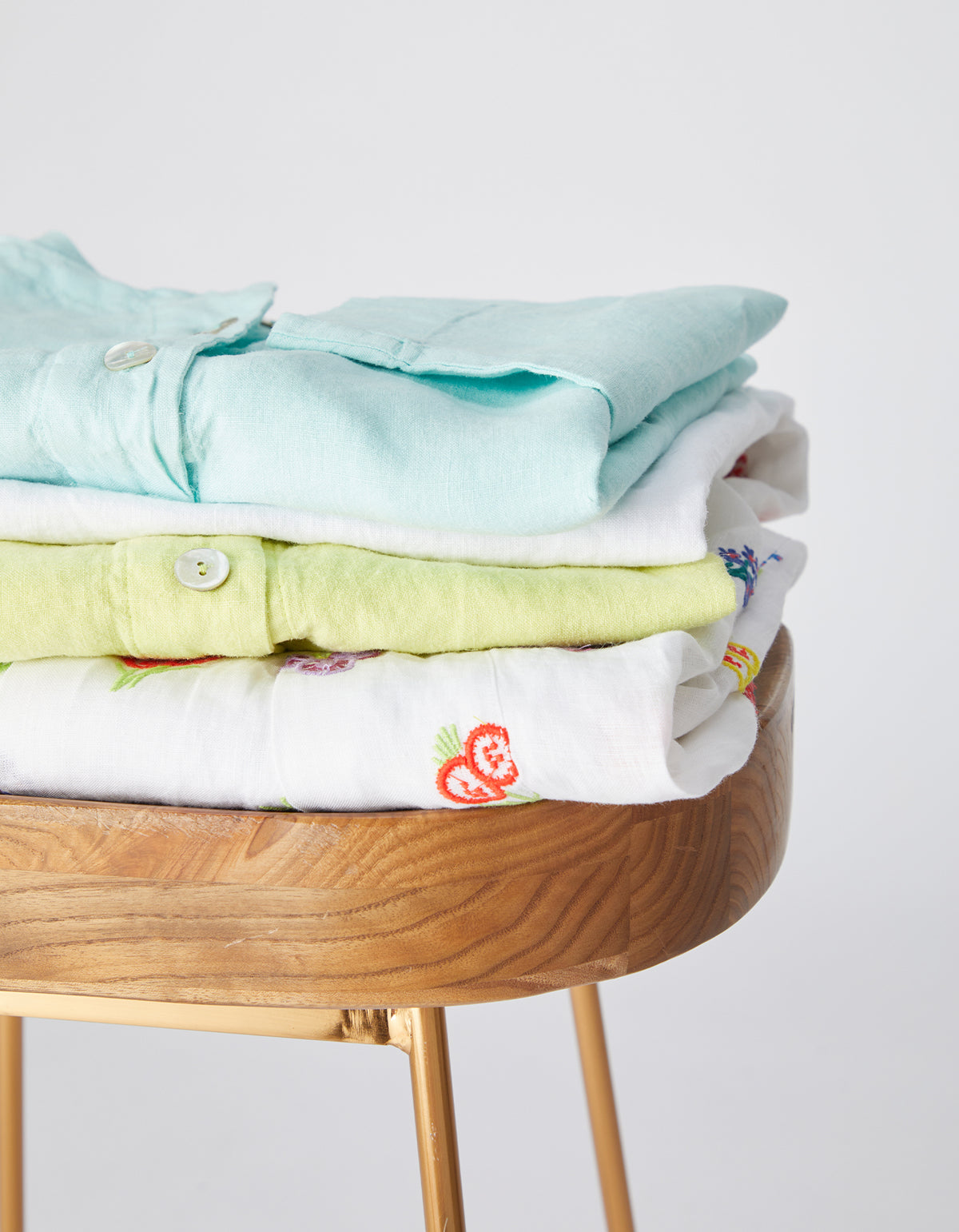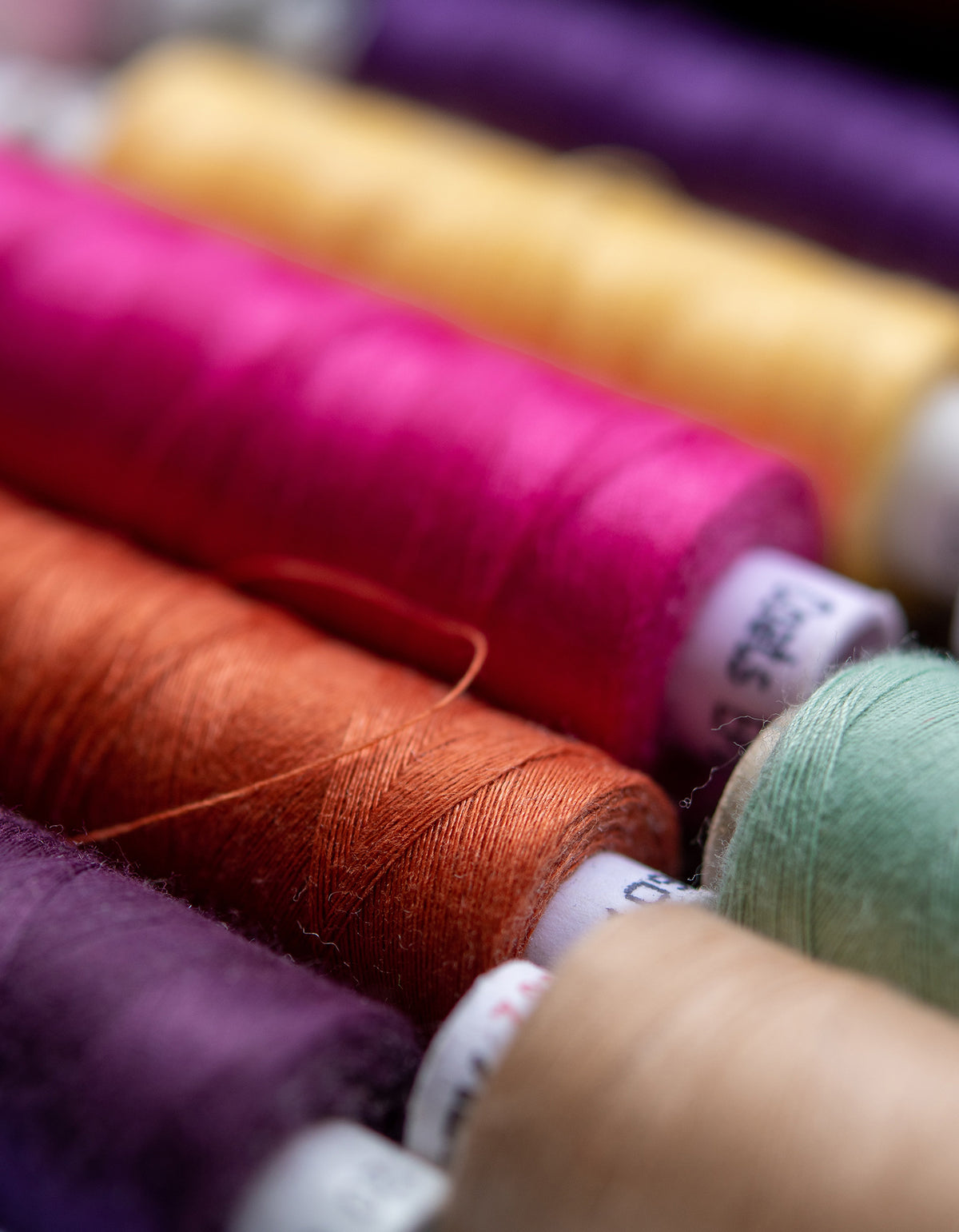
Garment Care
Our commitment to quality extends beyond aesthetics. With a focus on longevity, our designs are made to last, offering durability and timeless appeal. By investing in Sahara pieces, you not only invigorate your wardrobe but also contribute to a more sustainable fashion industry. We believe that caring for your clothing is essential to prolong its lifespan and maintain its impeccable quality. Each textile requires specific attention and care in order to retain its unique characteristics. To learn how to look after these specific fabrics and fibres, see below.

How to be More Sustainable
When Washing Your Clothes
Use the Maximum Capacity: When doing your laundry, aim to fill the washing machine to its maximum capacity. Avoid putting on a full wash cycle for only a few clothes. Utilizing the machine's full capacity helps conserve water and energy.
Wash at 30 Degrees: Opt for washing your clothes at lower temperatures, such as 30 degrees Celsius. Most modern detergents are formulated to be effective at lower temperatures, and this can significantly reduce energy consumption.
Air Dry Rather Than Tumble Dry: Embrace the natural drying method by air drying your clothes instead of relying on the tumble dryer. Hang them on a clothesline or use a drying rack. This not only saves energy but also helps preserve the quality and lifespan of your garments.
Use 'Clean' Detergents: Choose environmentally friendly laundry detergents that are free from harmful chemicals. Look for options like the Ecoegg, which provides an eco-friendly and sustainable alternative.
Use a Wash Bag: Consider using a wash bag like Guppy Friend when cleaning synthetic garments. This innovative bag captures microfibers released during the wash cycle, preventing them from entering water systems and causing pollution.
Planet Care Filter for Washing Machine: Explore the option of installing a Planet Care filter in your washing machine. This filter collects microfibers, protecting water sources and minimizing environmental impact.

How to be More Sustainable
When Storing Clothes
Clean Before Storing:
Ensure that your garments are clean and completely dry before storing them. Lingering dirt, stains, or moisture can lead to fabric deterioration or encourage the growth of mould and mildew.
Folding Knitwear/Woollens:
To prevent stretching or misshaping, fold knitwear and woollens instead of hanging them. Lay them flat in a drawer or on a shelf, ensuring they are fully dry beforehand.
Use Acid-Free Tissue Paper:
When storing delicate or valuable clothing items, consider wrapping them in acid-free tissue paper. This helps prevent discolouration and protects the fabric from any potential damage.
Avoid Plastic Bags:
Try not to store any of your favoured clothes in plastic bags, as they can trap moisture and lead to mildew or odour. Instead, opt for breathable fabric garment bags or cotton storage bags that allow air circulation.
Use Cedar Wood or Lavender:
Incorporate natural moth repellents like cedar wood chips or lavender sachets in your storage area. Moths dislike these scents and are less likely to cause damage to your garments. However, be cautious with direct contact between cedar wood and delicate fabrics, as it may leave behind marks or oils.
Organise by Season:
Consider organising clothing by season to keep your wardrobe well-managed. Store out-of-season items separately, allowing you to focus on the garments you currently wear. This also helps protect seasonal
clothing from unnecessary wear and tear.
Avoid Sunlight and Humidity:
Choose a storage area away from direct sunlight and extreme humidity. Sunlight can fade colours over time, and excessive humidity can lead to mould and mildew growth. The ideal environment for clothing storage is cool, dry, and dark.

How to Repair
Patch Kits:
Keep a patch kit on hand for repairing small tears or holes in your garments. These kits often include fabric patches and instructions for simple repairs.
Sewing on a Button:
Learn the art of sewing on a button to replace a missing one. There are numerous online resources that provide step-by-step instructions for button sewing.
Mending a Tear:
If you encounter a tear in your clothing, consider repairing it rather than discarding the garment. Taking it to a tailor is often more cost effective than replacing it with new.
Disguising a Moth Hole:
If you discover a moth hole in your garment, get creative with disguising it. You can use decorative patches,
embroidery, or appliques to cover the hole, giving your garment a unique touch while extending its life.

Pay it Forward
There comes a time when garments must move on, here are some of our recommended ways to rehome or dispose of them.
Upcycle:
Transform your clothing items into something new and exciting. Explore upcycling ideas online and repurpose your garments into accessories, home decor, or entirely new pieces.
Clothes Swap with Friends:
Organise a clothes swap event with your friends or join existing clothing swap communities. This allows you to refresh your wardrobe without contributing to waste.
Donate to Charity:
If your clothes are still in good condition but no longer suitable for you, consider donating them to local charities or thrift stores. This gives your garments a chance to find new owners who will cherish and enjoy them.
Caring for your Sahara clothing goes beyond washing and storing; it also involves sustainable practices, repairs, and responsible disposal. With these care practices, you can extend the lifespan of your cherished garments, reduce your environmental footprint, and continue to enjoy their beauty for years to come. Embrace the journey of sustainable fashion and be part of the movement towards a more mindful and eco-friendly wardrobe.



